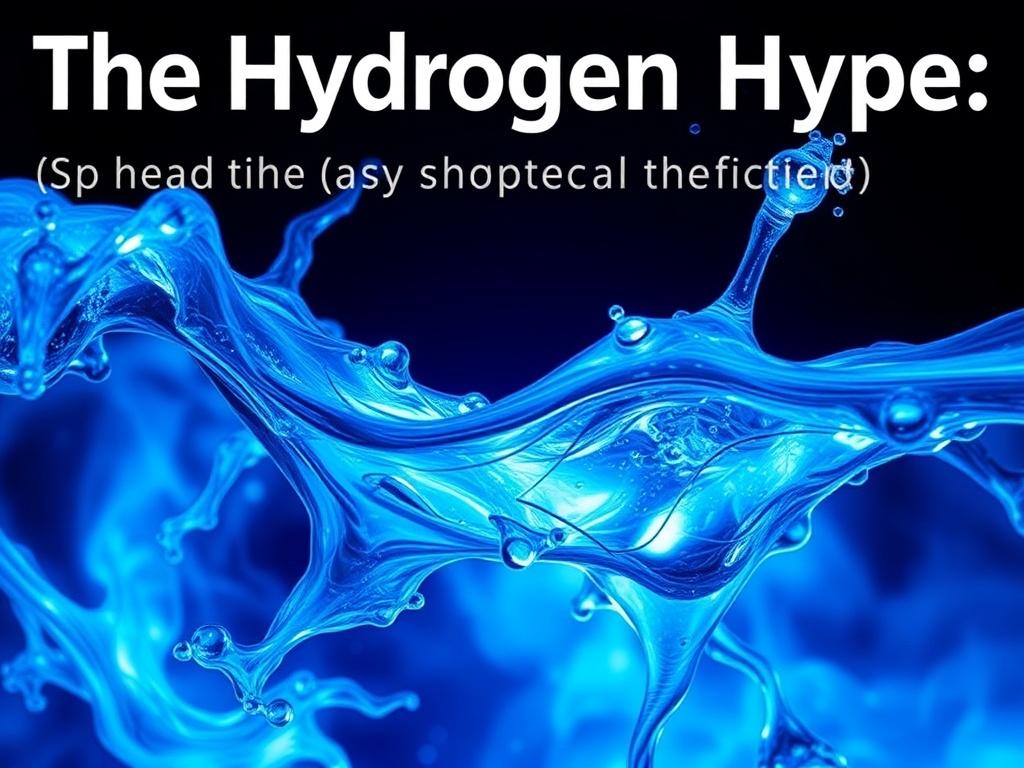- What is hydrogen and why all the excitement?
- How hydrogen is produced: the color code explained
- Grey hydrogen
- Blue hydrogen
- Green hydrogen
- Other colors (turquoise, pink, etc.)
- Production methods, in practical terms
- Steam methane reforming (SMR)
- Electrolysis
- Methane pyrolysis
- Storage and transport: hydrogen’s awkwardness
- Storage options
- Transport options
- Hydrogen uses: where it makes sense today and tomorrow
- Industrial feedstock
- Heavy transport
- Power generation and long-duration storage
- Residential and commercial heating
- Safety realities versus sensational headlines
- Environmental impacts beyond tailpipe emissions
- Lifecycle greenhouse gas emissions
- Water footprint
- Material and land footprint
- Economics: costs, tipping points, and competitiveness
- Myths versus realities: a practical myth-busting guide
- Myth: Hydrogen will replace electricity everywhere
- Myth: All hydrogen is clean
- Myth: Hydrogen is inherently dangerous compared to other fuels
- Myth: Hydrogen is the cheapest way to decarbonize transport and heating
- Policy, infrastructure, and the chicken-and-egg problem
- Case studies: where hydrogen is already making a difference
- Ammonia and fertilizers
- Steel production
- Heavy transport trials
- Seasonal energy storage
- Technical challenges and research priorities
- How to evaluate hydrogen projects: a practical checklist
- Who stands to benefit and who might lose out?
- Comparative table: when to choose hydrogen versus electrification
- Investment outlook and where the money is going
- How communities can prepare and participate
- International trade and geopolitics of hydrogen
- Practical timeline: what to expect in the next decade
- Simple rules of thumb for policymakers and businesses
- Final practical advice for the curious reader
- Conclusion
Hydrogen has become a magnet for headlines, policy announcements, venture capital, and bold promises about a low-carbon future. Everywhere you look there are proclamations that hydrogen will decarbonize heavy industry, power long-haul transport, store renewable energy on a seasonal timescale, and even replace natural gas in our homes. Some of this optimism is grounded in real chemistry and engineering; hydrogen is an incredibly versatile energy carrier and the lightest element on the periodic table. But like any technology with the aura of a silver bullet, hydrogen attracts hype. This article walks step-by-step through the promises and pitfalls, the science and the economics, and the realistic pathways to scale. It is written for curious readers who want a clear, conversational, and practical guide to separating fact from fiction when it comes to hydrogen.
What is hydrogen and why all the excitement?
Hydrogen is the simplest, most abundant element in the universe. On Earth, it rarely exists as an isolated gas; it is usually bonded to other elements such as oxygen (in water) or carbon (in hydrocarbons). To use hydrogen as an energy carrier, we must first produce it, store it, and then convert it back to energy—typically through combustion or a fuel cell. The allure of hydrogen is straightforward: when hydrogen is used in a fuel cell it produces electricity and only water vapor as a direct emission, which makes it extremely appealing for zero-emission applications. Moreover, hydrogen can store energy at different scales, serve as a raw material for industrial chemical processes, and act as a drop-in or near drop-in replacement for existing fuels in certain contexts.
But the picture isn’t all rosy. Producing hydrogen consumes energy and can generate greenhouse gas emissions depending on the method used. Hydrogen is also physically tricky: it’s a very low-density gas, which complicates transportation and storage; it’s prone to leakage; and its molecules are so small that they can embrittle metals and other materials. So the question becomes: where does hydrogen make sense, and where is it an expensive detour compared with better alternatives like electrification, efficiency, and direct renewable energy use?
How hydrogen is produced: the color code explained
It helps to understand the major production routes because the environmental and economic performance of hydrogen hinges on them. Industry and policymakers often use color codes to distinguish hydrogen types:
Grey hydrogen
Grey hydrogen is the most common form today. It’s produced from natural gas via steam methane reforming (SMR) or from coal via gasification. The process emits significant CO2; unless those emissions are captured and stored, grey hydrogen actually increases greenhouse gas concentration compared with hydrogen made from low-carbon electricity.
Blue hydrogen
Blue hydrogen uses the same fossil-fuel-based processes but couples them with carbon capture and storage (CCS) to trap a significant fraction of the CO2 produced. The key caveat is «a significant fraction»: CCS rarely captures 100% of the emissions, and emissions can also arise from methane leaks in upstream natural gas production and transportation. As a result, blue hydrogen can be lower-carbon than grey but is rarely fully zero-carbon unless all supply-chain emissions are addressed.
Green hydrogen
Green hydrogen is produced by splitting water with electricity using electrolysis. If the electricity comes from zero-carbon sources like wind, solar, hydro, or nuclear, the resulting hydrogen can be essentially emission-free. The cost of green hydrogen depends heavily on two factors: the capital and efficiency of the electrolyzers and the cost and availability of low-cost renewable electricity. As renewable electricity gets cheaper and electrolyzers scale up, green hydrogen becomes increasingly competitive.
Other colors (turquoise, pink, etc.)
Other labels exist—turquoise hydrogen (produced via methane pyrolysis, creating solid carbon as a byproduct), pink hydrogen (electrolysis powered by nuclear electricity), and more. They represent different trade-offs of emissions, economics, and technological maturity.
Production methods, in practical terms
To make smart choices, we need to look beyond labels at how hydrogen is actually produced and what the real-world environmental footprints are.
Steam methane reforming (SMR)
SMR takes methane (CH4) and reacts it with steam at high temperatures to produce hydrogen and carbon monoxide, which is then shifted to produce more hydrogen and CO2. SMR is mature and cost-effective where natural gas is cheap. The downsides are significant CO2 emissions and dependence on fossil feedstocks. Adding CCS reduces emissions but adds cost and complexity.
Electrolysis
Electrolysis uses an electrical current to split water into hydrogen and oxygen. There are three main types of electrolyzers in commercial or near-commercial use: alkaline electrolyzers, proton exchange membrane (PEM) electrolyzers, and solid oxide electrolyzers. Each has different costs, efficiencies, and operational characteristics. Electrolyzers can be ramped up and down, which makes them attractive partners for variable renewable energy, but they are still relatively expensive compared with chemical reforming.
Methane pyrolysis
This process splits methane into hydrogen and solid carbon. If the energy input is low-carbon and the solid carbon is stored or used in a durable form, methane pyrolysis can produce low-carbon hydrogen with fewer CO2 emissions than SMR. The technology is less mature than SMR and requires development to scale.
Storage and transport: hydrogen’s awkwardness
Hydrogen’s low volumetric energy density and small molecular size complicate how we store and move it.
Storage options
There are several ways to store hydrogen:
- Compressed hydrogen gas in high-pressure tanks (200–700 bar)
- Liquefied hydrogen at cryogenic temperatures (-253°C)
- Chemical carriers such as ammonia, methanol, or liquid organic hydrogen carriers (LOHCs), where hydrogen is bound in a compound for transport and then released later
- Underground storage in salt caverns (suitable for large volumes)
Each method has trade-offs in energy overhead, cost, infrastructure needs, and safety. Liquefaction, for instance, consumes a lot of energy and requires specialized facilities, while chemical carriers add conversion steps that cost energy and capital.
Transport options
Hydrogen can be moved via pipelines, road tankers (as compressed or liquefied hydrogen), or shipped as a carrier (e.g., as ammonia or liquid organic hydrogen carriers). Existing natural gas pipelines can sometimes be repurposed for hydrogen blends, but hydrogen’s chemical properties can damage pipeline materials, and pure hydrogen requires dedicated infrastructure for safe, efficient transport.
Hydrogen uses: where it makes sense today and tomorrow
Hydrogen is a tool, not a universal fix. The key is matching properties to needs.
Industrial feedstock
Much of today’s hydrogen (about half globally) is used in oil refining, ammonia production for fertilizers, and methanol production. These are “hard needs”—chemical reactions specifically require hydrogen, and decarbonizing these sectors often requires low-carbon hydrogen. For cement, steel, and other heavy industries, hydrogen can replace coal or natural gas in processes like direct reduced iron (DRI) to produce low-carbon steel. In many industrial processes electricity cannot easily do the chemical transformations hydrogen enables.
Heavy transport
Hydrogen shows up often in discussions of decarbonizing heavy transport: long-haul trucks, buses, trains, ships, and even aviation. Fuel cells provide longer ranges and faster refueling than batteries in many heavy-duty cases, and hydrogen’s higher gravimetric energy density can be advantageous for weight-sensitive applications. However, the lower volumetric density, infrastructure needs, and conversion inefficiencies are challenges. Batteries and electrification are often better for shorter-range vehicles, urban buses, and passenger cars.
Power generation and long-duration storage
Hydrogen can generate electricity in turbines or fuel cells and serve as a seasonal storage medium for surplus renewable energy. This is appealing in energy systems with large seasonal imbalances (for example, long winters with less solar resource). But converting electricity to hydrogen and then back to electricity through fuel cells or combustion is less efficient than storing electricity directly in batteries or thermal stores, so hydrogen makes sense when duration and scale outweigh round-trip efficiency losses.
Residential and commercial heating
Hydrogen could potentially replace natural gas in heating, either as a blend or via pure hydrogen. However, electrification through heat pumps tends to be more energy-efficient for many residential and commercial heating needs. Hydrogen for heating might be appropriate in regions where heat pump adoption is difficult or for specific industrial heat requirements where high temperatures are needed.
Safety realities versus sensational headlines

Hydrogen is flammable and has different properties than gasoline or natural gas, but the risks are manageable with proper engineering, codes, and training.
- Hydrogen’s low density causes it to disperse quickly in open areas, which can reduce the risk of pooled fuel fires, but conversely means leaks can be hard to detect.
- Hydrogen flames can be nearly invisible in daylight, making detection of ongoing combustion difficult without sensors.
- Small molecules cause embrittlement in certain metals and can lead to leakage if equipment is not specifically designed for hydrogen.
- Because hydrogen requires high-pressure storage for practical energy density, robust mechanical design is essential to avoid catastrophic failures.
Modern industrial practice has decades of experience handling hydrogen safely. New applications require updated codes, training, and public engagement to manage perceived risks effectively.
Environmental impacts beyond tailpipe emissions
When people say «hydrogen is clean,» they often mean hydrogen use emits no CO2. That statement can be misleading because the production pathway matters. A rigorous view looks at lifecycle greenhouse gas emissions, water use, land impacts, and upstream methane emissions.
Lifecycle greenhouse gas emissions
Grey hydrogen has a heavy carbon footprint. Blue hydrogen can reduce emissions significantly, but the net benefit depends on capture rates and fugitive methane. Green hydrogen can be nearly zero-carbon if the electricity source is truly low-carbon and the electrolyzer manufacturing footprint is accounted for.
Water footprint
Electrolysis consumes water; producing large volumes of green hydrogen at scale could require significant fresh water in certain regions. This is not an insurmountable issue—wastewater, desalinated water, or processes with limited water use can mitigate it—but water availability is a factor in siting large hydrogen production facilities.
Material and land footprint
Electrolyzer manufacturing uses rare materials and creates a demand for green electricity, which requires land for wind and solar farms at scale. Efficient planning, recycling, and circular material strategies help address those concerns.
Economics: costs, tipping points, and competitiveness

Prices for hydrogen vary widely depending on source, geographic location, and policy frameworks. Today, grey hydrogen produced from cheap natural gas remains the cheapest. Green hydrogen costs are falling rapidly as renewable electricity gets cheaper and electrolyzer manufacturing scales.
| Type | Typical cost factors | Near-term competitiveness |
|---|---|---|
| Grey | Natural gas price, SMR efficiency | Most competitive where natural gas is cheap |
| Blue | Natural gas price, CCS capital and operational costs, capture rate | Competitive with policy support and if methane emissions are low |
| Green | Renewable electricity price, electrolyzer capex and efficiency | Becoming competitive in sunny/windy regions and with scale |
Key economic drivers:
- Cost of electricity: For electrolysis, electricity can make up the majority of operating costs. Cheap, zero-carbon power is the single most important lever to lower green hydrogen costs.
- Electrolyzer capital costs and utilization: High utilization lowers levelized hydrogen cost. Flexible operation to match variable renewables can reduce utilization and raise costs.
- Cost of carbon and incentives: Policies that price carbon, subsidize low-carbon hydrogen, or penalize emissions change competitiveness dramatically.
Forecasts suggest that with falling renewable electricity costs and scale-up of electrolyzer manufacturing, green hydrogen can become cost-competitive for certain uses within a decade in some regions. But this is not uniform—local resource endowments and policy environments shape outcomes.
Myths versus realities: a practical myth-busting guide
People often conflate attractiveness with appropriateness. Let’s dispel common myths:
Myth: Hydrogen will replace electricity everywhere
Reality: In many end uses, direct electrification (heat pumps, electric motors) is more efficient and cheaper. Hydrogen is not a superior option for short-range passenger vehicles or many residential heating scenarios. It shines where electrification is difficult or where high-temperature heat and chemical feedstocks are required.
Myth: All hydrogen is clean
Reality: The cleanliness of hydrogen depends entirely on how it is produced. Grey hydrogen emits significant CO2; blue can reduce but not eliminate emissions without aggressive measures; green hydrogen is only as clean as the electricity source.
Myth: Hydrogen is inherently dangerous compared to other fuels
Reality: Hydrogen has distinct hazards but they are manageable with design, training, and regulation. It is not more dangerous than other fuels when systems are properly engineered.
Myth: Hydrogen is the cheapest way to decarbonize transport and heating
Reality: For many transport and heating applications, batteries and heat pumps beat hydrogen on cost and efficiency. Hydrogen becomes attractive for heavy transport, some industrial processes, and long-duration storage where batteries are impractical.
Policy, infrastructure, and the chicken-and-egg problem
Scaling hydrogen requires coordinated action across policy, infrastructure, and markets.
- Infrastructure investments: Pipelines, refueling stations, electrolyzers, and storage facilities require high upfront capital. Policy certainty and demand signals help mobilize investment.
- Standards and codes: Governments must update safety codes, building standards, and fuel quality standards to enable safe and interoperable hydrogen systems.
- Demand creation: Creating reliable markets—through public procurement, blending mandates, or industrial off-take agreements—reduces investment risk for producers.
- Carbon pricing and subsidies: Carbon pricing can level the playing field; targeted subsidies and contracts for difference can help green hydrogen scale until costs decline.
This chicken-and-egg dilemma—producers won’t invest without demand, and consumers won’t switch without supply—can be solved with coordinated policy instruments like hydrogen valleys, regional hubs, or long-term offtake contracts.
Case studies: where hydrogen is already making a difference
Real-world examples help ground theory.
Ammonia and fertilizers
Decarbonizing ammonia production is one of the clearest early use cases for low-carbon hydrogen. Several projects are underway to produce green ammonia for export or domestic fertilizer, leveraging existing industry demand.
Steel production
Pilot projects in Europe are testing direct reduced iron (DRI) using hydrogen to displace coke/coal in steelmaking. If successful and scaled, hydrogen-based steel could cut a large slice of industrial emissions.
Heavy transport trials
Hydrogen fuel cell buses and trucks are running in pilot fleets around the world. Ports and freight corridors are attractive initial markets because of centralized refueling and high utilization rates.
Seasonal energy storage
Some regions with abundant renewable generation and seasonal demand fluctuations are exploring salt cavern storage of hydrogen as a complement to battery storage that covers diurnal cycles.
Technical challenges and research priorities
Key technical hurdles include:
- Reducing electrolyzer costs and improving durability
- Improving methane emissions management across the natural gas supply chain
- Developing low-cost, low-energy hydrogen liquefaction and novel carrier technologies
- Addressing materials challenges like hydrogen embrittlement
- Scaling carbon capture and storage with high capture rates for blue hydrogen
Research priorities must be coupled with deployment to drive learning-by-doing. Modular, factory-made electrolyzers may follow the rapid cost declines seen in renewables if manufacturing scales similarly.
How to evaluate hydrogen projects: a practical checklist
For investors, policymakers, or community stakeholders evaluating hydrogen projects, consider these practical criteria:
- Production pathway and lifecycle emissions accounting.
- Electricity source and grid impacts for electrolysis projects.
- Availability of water and local environmental constraints.
- Supply chain and upstream methane leakage controls if fossil-derived.
- Market demand and firm offtake commitments.
- Infrastructure plans for storage, transport, and end-use distribution.
- Regulatory and safety frameworks in place or in development.
- Cost curves and sensitivity to electricity prices and carbon pricing.
Using this checklist helps separate projects that mainly chase subsidies from those that are likely to deliver real low-carbon value.
Who stands to benefit and who might lose out?

Hydrogen could reshape industrial landscapes, energy geopolitics, and local economies.
- Beneficiaries: industrial regions with existing hydrogen demand, renewable-rich geographies that can export green hydrogen or carriers, technology firms building electrolyzers and fuel cells, and countries with policy frameworks that enable rapid scaling.
- Potential losers: regions dependent on fossil fuel exports that don’t adapt, utilities or companies that fail to manage emissions in blue hydrogen supply chains, and technologies that face displacement by more efficient electrification alternatives.
A just transition lens is essential: workers and communities tied to legacy industries need pathways into the new hydrogen economy through retraining, investment, and local procurement.
Comparative table: when to choose hydrogen versus electrification
| Factor | Choose Electrification | Choose Hydrogen |
|---|---|---|
| Energy efficiency | Higher—direct use of electricity (e.g., heat pumps, EVs) | Lower—use where electricity can’t meet requirements |
| Temperature needs | Good for low-to-moderate heat | Better for very high-temperature industrial processes |
| Distance/weight constraints | Suitable for short-range vehicles; heavy vehicles suffer weight penalties with batteries | Good for long-haul heavy transport where refueling speed matters |
| Seasonal storage | Expensive for long duration; batteries cover short-term storage | Potentially attractive for seasonal and bulk storage |
| Industrial feedstock | Often unsuitable for chemical transformations | Required for many chemical processes (ammonia, refining, steel) |
Investment outlook and where the money is going
Capital is moving into hydrogen across a broad spectrum: electrolyzer manufacturing, green hydrogen plants adjacent to renewables, blue hydrogen projects coupled with CCS, fueling infrastructure, and pumped R&D into novel production and carrier technologies. Governments are offering grants, tax credits, and guaranteed offtake in many jurisdictions to stimulate early demand. Private investors, from venture capitalists to infrastructure funds, are targeting areas with defined demand and realistic paths to scale.
However, investors should be cautious. Some projects are speculative, banking on subsidies rather than on long-term market fundamentals. The winners will likely be those that align with local competitive advantages—cheap renewable electricity, industrial hubs that need hydrogen, or strategic trade corridors where exported hydrogen carriers make sense.
How communities can prepare and participate
Local communities can shape how hydrogen affects them by:
- Demanding transparent lifecycle greenhouse gas accounting for local projects.
- Insisting on strong methane leakage controls and environmental safeguards.
- Pursuing workforce development programs that prepare workers for new hydrogen facilities.
- Encouraging local procurement to maximize regional economic benefits.
- Engaging in planning around siting, safety, and infrastructure to avoid future conflicts.
Community engagement early in project lifecycles reduces opposition and leads to better outcomes.
International trade and geopolitics of hydrogen
Hydrogen could alter energy geopolitics. Countries with abundant renewable resources could become exporters of green hydrogen or its carriers (ammonia is a leading candidate), similar to how oil exporters dominate fossil fuel trade today. This shift could democratize energy supply in some cases but also create new dependencies and trade relationships. Trade logistics, carrier selection, and standardized certifications for low-carbon hydrogen will shape these emerging geopolitics.
Practical timeline: what to expect in the next decade
Predicting exact timelines is risky, but a plausible phased evolution includes:
- 2020s: Pilot projects, green hydrogen price reductions in high-resource regions, growing blue hydrogen deployments with CCS pilots, first industrial hydrogen hubs, early heavy transport fleets, and policy support frameworks.
- 2030s: Scale-up of electrolyzer manufacturing, more competitive green hydrogen in many regions, expanded hydrogen infrastructure in industry clusters, emerging international trade in hydrogen carriers, and clearer standards and certifications.
- 2040s and beyond: Potentially deep decarbonization of hard-to-electrify sectors, more mature hydrogen markets, and integration with global energy systems depending on policy and technology progress.
Simple rules of thumb for policymakers and businesses
- Prioritize hydrogen where there is clear, hard-to-abate demand (steel, chemicals, long-haul freight).
- Use carbon pricing and targeted incentives to avoid lock-in of high-emissions blue hydrogen without stringent methane controls.
- Invest in electrolyzer manufacturing and workforce training to capture domestic industrial value.
- Support pilots for carrier technologies and distributed hydrogen solutions in regions with matching resources.
- Coordinate internationally on standards and trade to prevent fragmentation of markets and duplication of infrastructure.
Final practical advice for the curious reader
If you are an individual thinking about hydrogen in the context of a career, investment, or local policy:
- Learn the difference between hydrogen production pathways and focus on low-carbon lifecycle metrics.
- Advocate for clarity in policy and project reporting—know whether a project is grey, blue, or green and on what basis.
- Watch the cost curves for renewables and electrolyzers; they are the most important determinants of green hydrogen competitiveness.
- Support electrification where it makes sense; hydrogen is a complement, not a universal replacement.
Conclusion
Hydrogen deserves its place in the decarbonization toolbox but not an uncritical crown as the one-size-fits-all solution. Its strengths—high energy per mass, versatility as a chemical feedstock, and potential for long-duration storage—make it invaluable for certain sectors, especially heavy industry, long-haul transport, and seasonal storage. Yet hydrogen’s costs, production-related emissions, transport and storage challenges, and comparative inefficiencies mean that electrification, efficiency improvements, and other technologies will remain the right choices in many contexts. The pathway to a useful hydrogen economy requires careful lifecycle accounting, strong methane and CO2 controls for fossil-based routes, rapid scaling of electrolysis with cheap renewables for green hydrogen, sensible infrastructure investments, and policies that create real demand rather than speculative bubbles. If governments, industry, and communities pursue hydrogen with humility and rigor—focusing on where it truly adds value and avoiding one-size-fits-all mandates—then hydrogen can be a powerful, pragmatic part of a low-carbon future.
Как вам статья?







